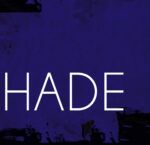2 Ear Impression
- After washing your hands, have a clean towel on which to place the equipment. Clean the equipment:
Clean towel
Otoscope
Right and left specula tips
Ear light
Impression material (Powder and Liquid)
Syringe
Otoblocks (Cotton blocks): Various sizes
- Clean all equipment and place the equipment on the clean towel.
1) Otological conditions
- Start and state as following:
First, I would like to ask eight otological conditions set by the FDA for any referral before I take an impression of your ear. Mr. A, please answer clearly.
- Do you have congenital or traumatic deformity of the ear?
- Do you have a history of active drainage within the last 90 days?
- Do you have a history of sudden or rapid hearing loss within the last 90 days?
- Do you have acute or chronic dizziness?
- Do you have unilateral hearing loss of sudden or recent onset within the last 90 days?
- Do you have an audiometric air-bone gap equal to or greater than 15 dB at 500, 1000, 2000 Hz?
- Do you have visible evidence of significant cerumen or foreign body in the ear canal?
- Do you have pain or discomfort in the ear?
2) Basic explanation of the impression procedure
If all items are answered negatively, I will proceed to take an impression of your ear. First of all, Mr. A, I will inspect your Pinna and ear canals with my otoscope. If everything is fine, I will place a cotton block inside your ear canal to prevent overflowing of impression material. Then I will take an impression. The whole procedure should take approximately 15 minutes.
3) Ear inspection
- Start inspecting with the right ear. Pick up the otoscope and clean. Pick up the right specula and clean. Use the bridge and brace technique.
- State the following:
I see the first bend; the ear canal wall is clean and free of ear wax. I see the second bend and the ear drum is clear. I see the cone of light. External pinna looks normal. Color and texture appear well. (Look at the back side of the pinna.)
- Clean right specula, put on the table and change left specula.
- And describe all the conditions of the left ear……
I see the first bend; the ear canal wall is clean and free of ear wax. I see the second bend and the ear drum is clear. I see the cone of light. External pinna looks normal. Color and texture appear well. (Look at the back side of the pinna.)
The ear condition is suitable to take an ear impression.
4) Impression
Now, I will take an impression of your ear. Please stay still. However, if you feel any pain, please say STOP. Do you understand? He answers.
- Clean the ear light and pick up the cotton block, and place the cotton block in the ear canal. Do bridge and brace technique.
- After this, CLEAN and PICK UP the otoscope and specula to make sure the cotton block is placed properly.
State: There is no gap between the canal wall and the cotton block, and the block is firmly in place.
- The proctor will check the otoblock placement. I must recheck after the proctor is done.
Mr. A, You will feel a cool flow in your ear canal as I fill the impression material, but it will be fine.
- After sanitize hands, impression material, syringe, putty, and all, mix impression material and place inside syringe and take impression.
- Clear the end flow of the tip of the syringe. Use the bridge and brace technique. After injecting the impression into the canal, sanitize hands.
It will take approximately 10 minutes for the impression material to be cured completely.
- I count the time with my watch.
5) Removal and description
In our office, we wait exactly 10 minutes for the impression material to be cured, but due to the limitation of time in this exam, I will remove the ear impression a little earlier.
- After sanitizing your hands, remove the impression.
- Remove the impression slowly. Pull up the Pinna to the back side, up side and bottom side and make some vibration with minimal force.
- After removal, clean the impression with sanitizing cloth and place on the towel.
- Recheck the ear canal
- After removing the impression, sanitize hands, clean the otoscope and specula and re-examine the ear that made the impression.
Now, I examine the ear canal again.
- After you examine the ear canal, state as following:
The ear canal is clear of debris.
- After removing the impression, describe the condition of the impression as following:
I will describe the impression I took. Outside surface is smooth, not rough. I can see the concha here, helix area here, and tragus here. I can see the first bend, but not the second bend. I will take another impression containing the second bend before I send the impression to the lab.
- Have a container ready to hold the finished impression.
- Clean equipment, pack and leave
- I may be asked to identify the suitable condition of the ear canal or ear drum. You need to choose the picture containing the clear cone of light.
- Pack all equipment and thank the proctors.
